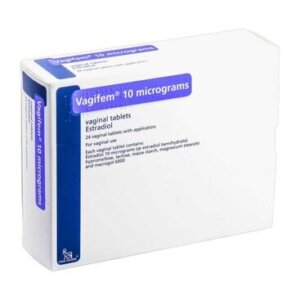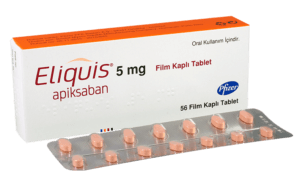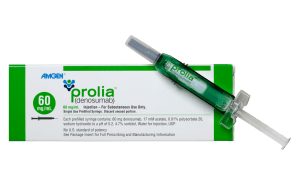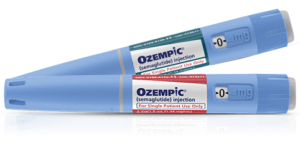
Now, you’re faced with a pressing question: How do I get rid of these worms quickly, effectively, and safely? The good news is that intestinal worms, particularly the most common invader, the pinworms, are easily treatable with medications like Vermox (generic name: mebendazole) and Albenza/Andazol/Eskazole (albendazole). But treating worms isn’t just about giving one dose of medicine. It requires a systematic approach to prevent reinfection and keep the rest of the household worm-free.
I’ve raised two generations of kids who have individually and collectively lived through cycles of infestation by these nasty little critters that seem to have a special appetite for the rear ends of well-fed and warm children. In the following sections, I’ll try to summarize what I learned from my own experience and with the help of (frequent) visits to family doctors and pediatricians when I needed professional help to quell the distress the kids were undergoing.
Understanding the enemy: What are intestinal worms?
Intestinal worms are parasites that infect the human digestive system, most commonly affecting children. The main culprits include:
Pinworms
- Properly known as Enterobius vermicularis
- Also called seatworms or mistakenly lumped together with threadworms (especially in England and Australia.)
- The most common intestinal parasite in children.
- Causes enterobiasis, leading to intense anal itching, especially at night.
- Small, white, thread-like worms, about 8-13 mm (¼ to ½ inch long).
- Highly contagious and spreads via fecal-oral transmission (touching contaminated surfaces, bedding, clothing, etc.).
- Treated with albendazole and Vermox (mebendazole).
Threadworms
- A distinct form of parasitic worm called Strongyloides stercoralis.
- Can cause a condition known as strongyloidiasis, which can be more serious.
- Can penetrate the skin (often through bare feet in contaminated soil).
- May cause diarrhea, abdominal pain, or skin rash; in severe cases, it can spread to other organs.
- Treated primarily with ivermectin when albendazole is not effective.
Roundworms
-
- Known as Ascaris lumbricoides, it is a large intestinal parasite (nematode).
- Causes ascariasis, which is common in areas with poor sanitation.
- Spreads by ingesting parasite eggs from contaminated food, water, or soil.
- Cases mostly are mild, but severe infections can cause abdominal pain, malnutrition, intestinal blockage, or lung issues due to larvae migration.
- They are long, spaghetti-like worms that can grow to 15-35 cm (6 inches – 1 foot) long!
- Treated with albendazole or Vermox (mebendazole).
Hookworms
- Caused by both Ancylostoma duodenale and Necator americanus.
- Is classified as a blood-feeding intestinal parasite (nematode).
- Hookworm disease is common in tropical/subtropical regions.
- It spreads when larvae penetrate the skin (often through bare feet in contaminated soil).
- Symptoms are mainly anemia, fatigue, abdominal pain, diarrhea, and skin irritation (“ground itch”).
- Appears as small, curved worms with teeth-like structures (5–13 mm long).
- Treated with albendazole or Vermox (mebendazole).
Tapeworms
- Comes in various forms such as Taenia (meat) and Diphyllobothrium (fish) tapeworms
- Appearance is of a flat, segmented intestinal parasite (cestode).
- Causes taeniasis (from Taenia species) or other tapeworm infections.
- Spreads by eating undercooked or contaminated meat/fish containing tapeworm larvae.
- Many people have no symptoms, but some may experience weight loss, nausea, digestive discomfort, or vitamin deficiencies.
- It’s a long, ribbon-like worm that can grow several meters inside the intestines!.
- Can be treated with albendazole for certain types.
The good news? Vermox and Albenza are both frontline treatments for many of these worm infections, and they’re widely available.
Stopping the cycle. How to prevent reinfection 
Here’s where things get tricky! Intestinal worm eggs spread easily, meaning an untreated family member can reinfect everyone else. So, to stop the cycle and treat the entire household, even if only one child shows symptoms, it is recommended that everyone should take a dose of albendazole or mebendazole to prevent reinfection.
Hygiene tips to keep the worms away
- Wash hands frequently, especially before eating and after using the bathroom.
- Keep fingernails short and clean. Worms spread via under-the-nail contamination.
- Daily morning baths to wash away eggs laid overnight.
- Change underwear and pajamas daily.
- Wash bedding and towels in hot water to kill any lingering eggs.
- Encourage children not to scratch (easier said than done!).
School and daycare precautions
If your infected child attends daycare or school, notify the staff so they can encourage good hygiene practices in the group setting. You owe it to the other children and their families to eliminate the pool of infection as quickly as possible.
How to take worm meds – a parent’s guide
Vermox and Albenza both work the same way to prevent worms from absorbing essential nutrients, effectively starving them to death.
Appropriate dosing regimens
The only proper way to treat parasitic worm infections is with the guidance of a qualified healthcare provider. Below is a brief summary of what I’ve gathered together over the many visits I’ve paid to our family physicians while I was bringing up my brood.
Dosage comparison
| Parasite | Vermox (mebendazole) | Albenza (albendazole) |
| Pinworms (E. vermicularis) | 100 mg once; repeat in 2 weeks if needed. | 400 mg once; repeat in 2 weeks if needed. |
| Roundworms (A. lumbricoides) | 100 mg twice daily for 3 days, or 500 mg once. | 400 mg once. |
| Hookworms (A. duodenale, N. americanus) | 100 mg twice daily for 3 days, or 500 mg once. | 400 mg once. |
| Threadworms (S. stercoralis) | ❌ Not recommended (ineffective). | 400 mg daily for 3 days (may repeat if needed). |
| Whipworms (T. trichiura) | 100 mg twice daily for 3 days, or 500 mg once. | 400 mg once. |
| Tapeworms (Taenia spp., Diphyllobothrium spp.) | ❌ Not recommended. | 400 mg twice daily for 3–7 days. |
| Cysticercosis (Taenia solium larvae – Neurocysticercosis) | ❌ Not recommended. | 15 mg/kg/day (max 800 mg/day) for 8–30 days. |
| Echinococcus (Hydatid disease) | ❌ Not recommended. | 400 mg twice daily for 1–6 months. |
Key Notes:
- Mebendazole is more commonly used for intestinal worms like pinworms, roundworms, hookworms, and whipworms.
- Albendazole is more broad-spectrum, treating threadworms, tapeworms, and cysticercosis.
- Some infections require a single dose, while others need multiple days of treatment.
- Always consult a doctor for the exact dosage, especially for children or severe infections.
Potential side effects: What to watch out for
Most children tolerate Vermox and Albenza well, but side effects can occur. Here’s what to expect:
Common side effects that should clear up on their own:
- Mild gastrointestinal distress, causing nausea, diarrhea, vomiting, and stomach pain.
- Headaches and dizziness during treatment.
Rare but potentially serious side effects:
- Very rarely, people may go into anaphylactic shock, not just on Vermox, but on many other medicines. They have an allergic reaction, with a rash, swelling of the face, tongue, or throat, making it difficult to breathe or swallow, or there is wheezing, hives, rash, blistering, or peeling of the skin. In suh a case, call a doctor or 911 right away, or go to an emergency room immediately.
- Also very rarely, when taking Albenza, there may be signs of liver issues, with symptoms like extreme fatigue and yellowing of the skin or eyes. Consult a doctor as soon as possible.
What to do if unexpected side effects occur:
- Mild symptoms? Encourage hydration and monitor your child.
- Severe reaction? Stop medication immediately and seek medical help.
In summary, dealing with intestinal worms can be unsettling, but the key is to act quickly, treat everyone, and maintain good hygiene. With Vermox and Albenza, you can eliminate worms efficiently while minimizing the risk of reinfection.
If your child wakes up scratching tonight, take a deep breath. Hopefully, you now have the knowledge and tools to tackle it head-on. Here’s to happy, worm-free nights!
Frequently Asked Questions about Intestinal Worm Treatments
How long does Vermox take to work?
Mebendazole starts killing worms within 24 to 48 hours, but it may take a few days for symptoms like itching to disappear completely.
Can I crush the tablets for my child?
Yes! Mebendazole tablets can be chewed, crushed, or swallowed whole. If your child struggles with pills, mix the crushed tablet into a spoonful of food.
Should I re-dose after two weeks?
For pinworms, yes! The second dose ensures that any newly hatched worms are eliminated.
Are Vermox and Albenza safe for pregnant or breastfeeding mothers?
Both mebendazole and albendazole are not considered safe during pregnancy, especially in the first trimester. If you’re pregnant and dealing with worms, consult your doctor for safer alternatives.
Can pets transmit intestinal worms to humans?
While pinworms don’t come from pets, other worms (like roundworms) can. To keep your family safe, make sure pets are dewormed regularly.

















